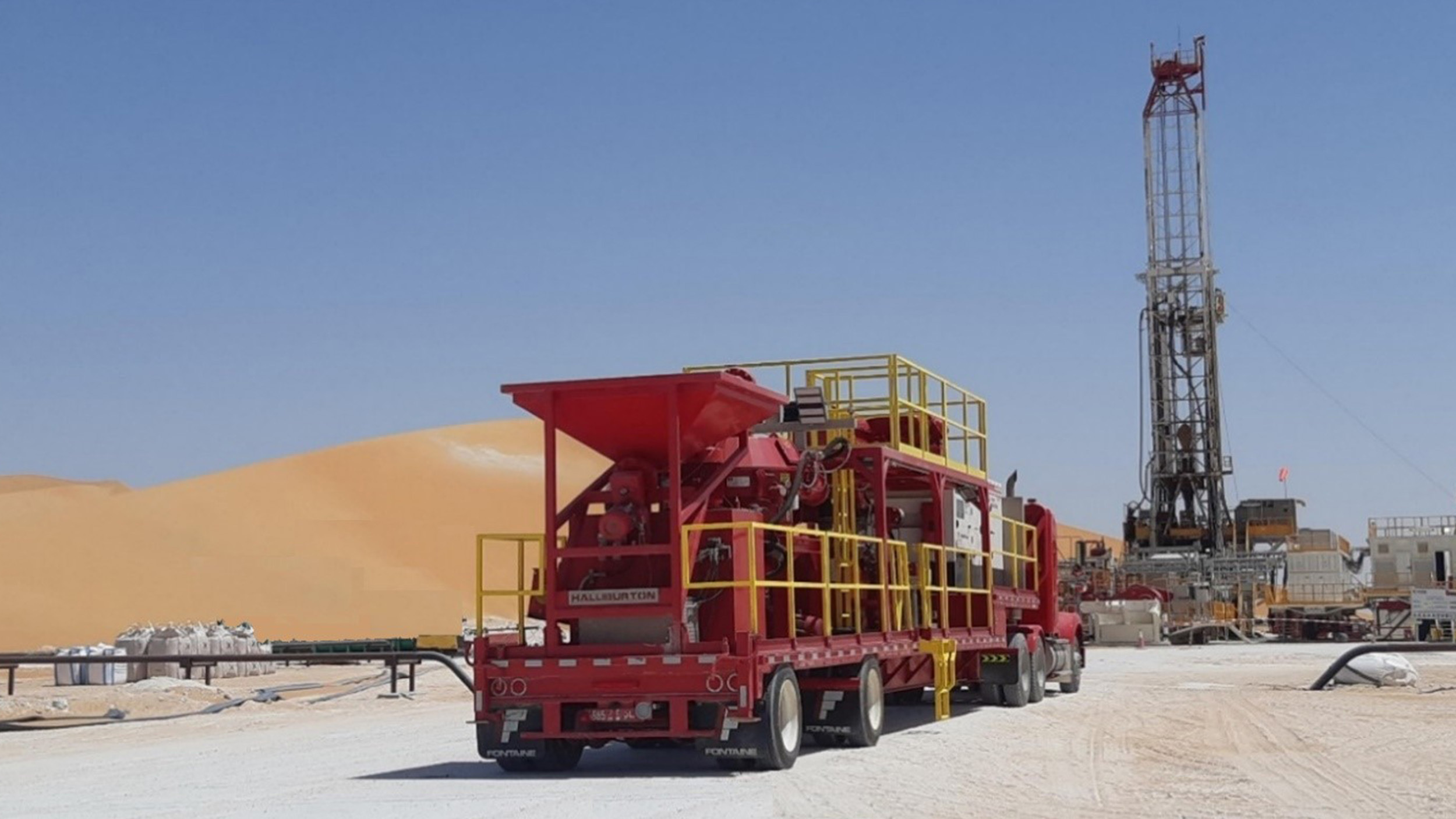 Search
Search
 Search
Search

BaraFLC Nano-1 reduced dilution rates, lowered fluid viscosity, and tightened filtration rates during a 22-day interval with maximum downhole temperature >300ºF
Download PDFMature

Reduce dilution rates, lower fluid viscosity, and tighten filtration rates
Oman

A major operator in Oman drilled 6 in. diameter vertical hole sections to access gas reservoirs at >5,000 meters depth with a high-temperature salt and polymer water-based fluid (WBF) containing bridging agents.
The standard fluid mix included a synthetic fluid loss polymer required for filtration control at elevated downhole temperatures. Although the polymer effectively kept filtrate values down within required limits, it also increased fluid viscosity — causing high equivalent circulating density (ECD) and standpipe pressures (SPP). The operator sought an alternative WBF formulation to improve drilling and wireline performance while maintaining tight filtration characteristics and a thin filter cake. The operator also expected to realize reduced dilution rates and lower fluid maintenance costs during the lengthy interval.
The operator drilled multiple wells using a fluid mix, which depended on a high-viscosity synthetic polymer for good control of the high-pressure, high-temperature (HPHT) filtration and particle plugging apparatus (PPA) spurt and filtrate values. The limitations of this approach were apparent when polymer additions to lower the filtration rate caused high-viscosity events. This slowed progress in the drilling phase. Lower viscosity and filtrate were desired, but this ideal combination was not possible given the behavior of the conventional system components.
The Baroid Technical Team used new technology to design a custom salt polymer drilling fluid. BaraFLC Nano-1 wellbore sealant was implemented to replace the high-temperature synthetic fluid loss polymer from the formulation. Extensive laboratory work was performed to qualify the proposed WBF, which would be the first high-salinity and HPHT application with this unique liquid nanoparticle sealant.
The optimum fluid formulation exhibited tight filtration characteristics with an improved rheological profile that reduced the plastic viscosity (PV) while maintaining suspension characteristics. The fluid design and the deployment recommendations were approved by the operator.
Once the 7 in. shoe had been drilled out, the circulating fluid system was treated with BaraFLC Nano-1 wellbore sealant while drilling ahead. After completing two circulations, the filtration characteristics improved notably with HTHP fluid loss (302ºC) reducing from 60 to 10 ml and total PPA dropping from greater than 50 ml to 11 ml/30 minutes (302ºF, ∆500 psi on 10µ ceramic disc). The PV was maintained at an average value of 16 cP throughout the section.
The section was drilled in 22 days with three bit runs required through hard, abrasive formations. Stable hole conditions were observed while drilling, tripping, logging, and running tubing. Despite the length of time needed to complete the interval, the fluid consumption was low, confirming the resilience of the Baroid fluid formulation, as well as the BaraFLC Nano-1 additive at high bottom hole temperatures. Minimal dilution factors and maintenance treatments reduced fluid costs and simplified logistics to the remote location.
Number of sacks eliminated
Number of truckloads eliminated
mL/30 min of fluid loss at 500 psi
The inclusion of BaraFLC Nano-1 wellbore sealant in the salt/polymer mud system delivered the following results:
Based on the positive first trial results, the operator will continue to use BaraFLC Nano-1 in the ongoing development campaign. These charts show performance contrasts between the old and new WBF systems.

Expansive portfolio of engineered high-performance water-based fluids and additives that can be customized to meet your specific challenges

Halliburton leads the drilling fluids industry with cutting-edge solutions, including advanced drilling fluids and solids control technologies.
